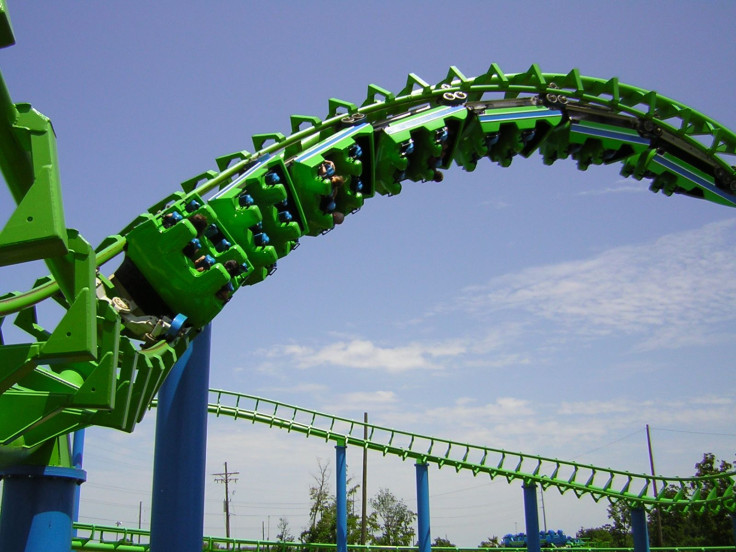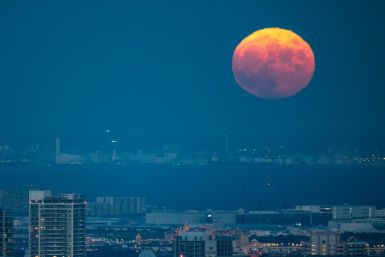Six Flags Will Set Up Shop In Dubai As Middle East Tourism Recovers From Financial Crisis

Plans for a new Six Flags theme park project in Dubai signal an advance for the region’s tourism-based economy after a few very bumpy years.
After a free fall during the global financial crisis, the global tourism industry has been getting back on track in recent years, especially in places such as the United Arab Emirates, where a burgeoning younger class is looking for fun, with money to spend.
“What’s happening in the Middle East, especially Dubai and Abu Dhabi, reflects the overall, worldwide return to a positive outlook in attractions markets,” a 2013 report from the Themed Entertainment Association stated.
“There is more optimism now, a lot of interesting projects being planned and expectation of future growth and expansion,” it reads, adding that the Middle East is unique because of its demographics -- people are much younger there than in other markets.
The $1.1 billion Six Flags Entertainment Corporation, which announced its Dubai plans on Thursday, partnered with the Dubai-based Meraas Leisure and Entertainment for the park, which will be part of a larger theme-park complex, to be completed in 2017.
“As part of our commitment towards creating one-of-a-kind experiences and contributing towards the Dubai Tourism Vision 2020, our association with Six Flags will help us develop a world-class destination that redefines the industry and positively impacts the regional tourism sector,” Raed Al Nuaimi, chief leisure and entertainment officer of Meraas L&E, the entertainment arm of Meraas Holdings, said.
The Dubai government hopes to have 20 million tourists and more than $81.6 billion in tourism revenue by 2020. Working with partners such as Legoland and Six Flags is meant to attract families, which will help achieve the goal.
“We are honored to be working with this world-class organization as the first significant strategic step taking the Six Flags brand to growing and successful markets outside North America,” Jim Reid-Anderson, chairman, president and CEO of Six Flags Entertainment, said in a public statement.
The current Dubai project isn’t their first foray in the area. In March of 2008, the company announced plans to team up with Tatweer Dubai, another developer, to build several locations in the Middle East, including a 5-million-square-foot-park in Dubai.
But in June 2009, Six Flags filed for bankruptcy protection, under a debt of more than $2 million, according to the Wall Street Journal.
“Dubailand” was meant to be twice the size of Walt Disney World Resort, and include parks from partners such as Universal Studios and Legoland. The $91 billion project was put on hold during the the global financial crisis according to Arabian Business.
Unlike its neighbor, Abu Dhabi, which depends heavily on petroleum and natural gas exports, Dubai has always focused on tourism, which made it more sensitive to shifts in the global economy. But lately, it’s proving to be a good bet after all.
“Dubai will become an increasingly important growth driver in the UAE as the emirate’s non-oil economy records significant growth rates,” a 2013 report from Business Monitor International states. “We expect the tourism, real estate and retail sectors to bolster growth as Dubai continues to bounce back strongly from the recession.”
Last year, international tourist arrivals grew by 5 percent globally, according to the United Nations World Tourism Organization.
“The positive results of 2013, and the expected global economic improvement in 2014, set the scene for another positive year for international tourism,” said UNWTO Secretary-General Taleb Rifai, in a public statement.
In the Middle East, prospects are “positive yet volatile,” the report said.
This is true especially of the theme-park industry, which is growing at a rate of more than 20 percent annually, according to International Expo-Consults. The firm was the organizer of the Dubai Entertainment and Leisure Show, held earlier this week, which attracted more than 7,000 visitors from more than 33 countries.
“This year’s event is much larger than the earlier editions,” said Abdul Rahman Falaknaz, chairman of the organization.
“Exhibitors are focusing on the Middle East as a new business destination, with most of these participants now even more aggressively exploring means to establish a strong presence within the region.”
© Copyright IBTimes 2024. All rights reserved.












